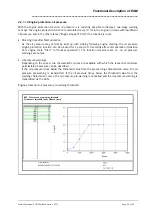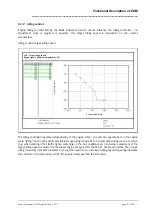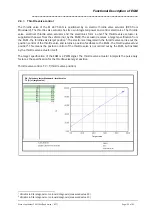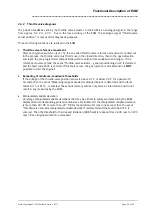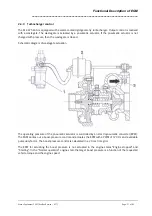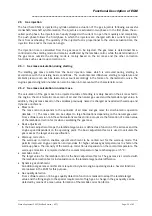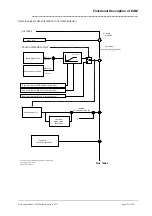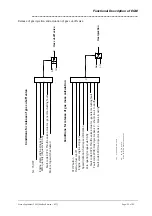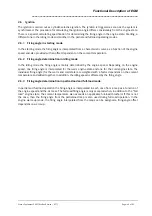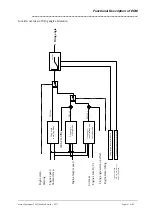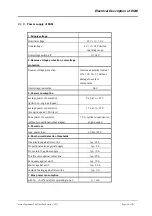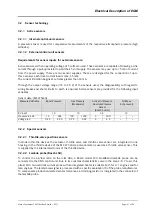
Functional Description of EGM
_____________________________________________________________________
Status September 2003 (EvoBus-Service / AFT)
Page: 35 of 83
2.5
Gas injection
The fuel (here CNG) is injected by cylinder-selective actuation of the gas injectors following successful
crankshaft/camshaft synchronisation. The injectors are actuated in two phases. In the first phase, the so-
called push phase, the injectors are heavily charged with current to open them quickly and completely.
The push phase follows the hold phase in which the injectors are charged with less current to protect
them from overheating. The quantity of the injected fuel is proportional to the entire actuation time, the
injection time and/or the injection angle.
The injection time is calculated from the gas mass to be injected. The gas mass is determined time-
controlled in the starting mode and remains unaffected by the lambda control, while the determination of
the gas mass outside the starting mode is mainly based on the air mass and the other correction
functions such as warm-up correction etc.
2.5.1
Gas mass calculation during starting
The starting gas mass results from the basic injection mass, which is corrected during starting in
accordance with the existing basic conditions. The environmental influences starting temperature and
ambient pressure can each be taken into account accordingly in the forma of a characteristic curve. The
engine speed and ignition number can also be taken into account with a characteristic curve.
2.5.2
Gas mass calculation in normal case
The calculation of the gas mass to be injected outside of starting is mainly based on the air mass fed to
the engine, the stoichiometric mass ratio of air and the natural gas used and the lambda target value. In
addition, the gas mass based on the variables previously named is charged as needed with warm-up and
dynamic enrichment.
•
Mass ratio
The mass ratio corresponds to the quotients of air mass and gas mass for stoichiometric operation
(lambda = 1). The mass ratio can be subject to large fluctuations depending on the natural gas used.
From software version 14A these fluctuations are taken into account via the formation of a mean value
of the lambda correction factor when calculating the gas mass.
•
Basic adjustment
In the basic adjustment maps the lambda target value is defined as a function of the air mass and the
engine speed dependent on the operating point. The basic adjustment factor is used to calculate the
gas mass as the target value specification.
•
Warm-up correction
The warm-up correction enables special enrichment to be carried out for the warm-up mode. This
permits improved engine operation and provides for higher exhaust-gas temperatures to shorten the
warm-up phase. The intensity of the warm-up correction is dependent on the coolant temperature. The
warm-up correction is completed when the coolant temperature has reached approx. 35 °C.
•
Lambda control
The target value for the lambda control is the basic adjustment factor. The gas mass is corrected with
the lambda correction factor in dependence on the lambda target-actual difference.
•
Dynamic gas enrichment
An additional gas mass enrichment is required in dynamic engine operating states. Several functions
are realised in the EGM for this purpose.
•
Gas quality detection
From software version 14A a gas quality detection function is realised to adapt the lambda target
value and the firing angle to the special requirements of high gas. A change in the gas quality can be
detected by means of a mean value formation of the lambda correction factor.




